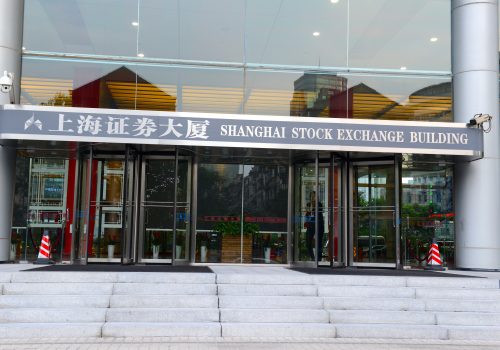China to roll out its version of quantitative easing
The People’s Bank of China (PBOC) released a draft Financial Stability Law on April 6 to consolidate a raft of administrative decrees that were put in place to manage risks to China’s financial sector. Of particular interest among the law’s provisions is the plan to set up a financial stability fund which will enjoy liquidity support from the PBOC to diffuse financial stability risks. Consequently, at the moment the US Federal Reserves (Fed) is about to shrink its balance sheet after years of quantitative easing (QE), the PBOC is gearing up to implement its version of QE—using its balance sheet to support the financial sector and the economy. The policy divergence between the two major central banks will have differentiated implications for the growth prospects of both countries, as well as international financial markets and capital flows, especially concerning emerging markets.
Concretely, the draft law will establish a new financial stability and development committee under the chairmanship of Vice Premier Liu He to coordinate various ministries and agencies to manage risks to financial stability, mainly stemming from high levels of corporate debt. The committee will manage the financial stability fund, which will be financed by contributions from banks and other financial institutions including financial infrastructure operators—such as securities clearing and settlement facilities. Most importantly, the fund will enjoy liquidity backstop by the PBOC. This move reflects China’s authorities’ concerns about risks that the ongoing debt resolution of Chinese real estate developers will spill into other sectors, threatening overall financial stability and slowing economic activity. These risks were heightened by renewed economic disruptions caused by the spread of the Covid variant Omicron, leading to the shutdown of Shanghai, as well as the fuel, food supply, and price shocks triggered by the war in Ukraine.
However, China is mobilizing resources to support financial stability and moderately ease fiscal and monetary policy stances to sustain growth. The PBOC has just reduced its required reserve ratio by 0.25 percentage point to enable banks to lend more —helped by the fact that inflation is quite subdued at 1.5%. By contrast, the United States must do the opposite to correct for the generous policy accommodations in previous years – fiscal policy has been tightened and subtracted from growth since the beginning of 2021, and the Fed has raised its policy rates by 0.25 percentage point. More hikes expected as well as to more forcefully shrink its balance sheet—to deal with a decades-high inflation rate of 8.5%. The policy divergence will affect the relative economic and financial developments between the United States and China, with significant implications for the global economy and emerging markets. As US interest rates rise and the US dollar strengthens thanks to US policies, portfolio capital has begun to flow out of emerging markets.
In fact, March 2022 saw a net outflow of almost $10 billion from emerging markets, led by an exit from Chinese equities and bonds, according to the Institute of International Finance. China can cope with such outflows as it has many tools for capital control and continues to attract substantial foreign direct investment (FDI) inflows—which increased by 38% year-over-year in the first two months of 2022 to $38 billion. More worrisome are the prospects for a growing number of emerging market and low income countries, such as Zambia, Ethiopia, Chad and Sri Lanka, which face high risks of, or are already in, sovereign debt distress.
Going forward, it is important to keep in mind that if the economic fallout from the war in Ukraine persists, China has ample policy space to support growth compared to the United States. China’s growth estimates for 2022 have been revised downward by a percentage point or more below the government’s target of 5.5%. By comparison, US growth estimates have been cut to 3% for the whole year; with several economists saying that a recession may not be avoided as the Fed needs to raise rates much more forcefully to bring down inflation. Against that backdrop, the United States has little room for fiscal stimulation relative to China—the general government debt of the United States stands at 130% of its GDP, compared with that of China at 72%, according to the IMF. Similarly, the PBOC’s balance sheet has more than doubled since 2008 while that of the Fed has ballooned by ten times. The divergence in the room for policy actions between the two countries will affect their relative growth prospects if stagflation pressures persist for longer than currently expected, with significant implications for the world economy and financial markets.
Hung Tran is a nonresident senior fellow at the Atlantic Council, former executive managing director at the International Institute of Finance and former deputy director at the International Monetary Fund.

At the intersection of economics, finance, and foreign policy, the GeoEconomics Center is a translation hub with the goal of helping shape a better global economic future.
Related reading
Image: Multi exposure of virtual abstract financial graph interface on Chinese flag and sunset sky background, financial and trading concept
